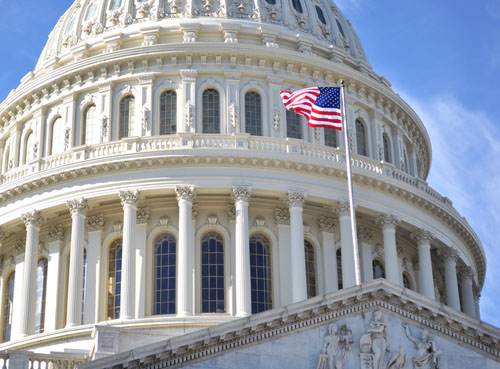The Objective of the NRRA Under the Dodd-Frank Act
Deep within the 2,319-page Dodd-Frank Wall Street Reform and Consumer Protection Act of 2010 (Dodd-Frank) is the Non-admitted and Reinsurance Reform Act (NRRA). With the NRRA, Congress sought to simplify the complex and often conflicting web of taxing, licensing, and eligibility rules associated with the procurement of insurance from non-admitted insurers across the 50 states, District of Columbia, and five U.S. territories.
The legislation—the product of much debate among regulators, insurance buyers, brokers, agents, and insurers—has brought dramatic changes for those procuring non-admitted insurance for their organization from wholly owned captives. Captive owners need to be aware of the law’s implications and should evaluate the specific impact of state legislation on their obligation for payment of premium taxes under such transactions.
Taxation on Non-Admitted Insurance Before the NRRA
Surplus Lines Tax Versus Self-Procurement Tax
Historically, two-thirds of states have assessed a premium tax on insureds that obtain insurance from a non-admitted insurer. That tax is assessed whether the insurance is procured:
- through a broker with a surplus lines insurer (which is required to meet certain state eligibility requirements) whereby the broker remits the tax on behalf of the insured; or
- on a direct basis (known as self-procurement or direct placement tax) whereby the insured directly remits the tax to the state.
Assessment and Collection of Self-Procurement Tax on Direct Captive Placements
A captive insurance company is generally non-admitted outside its state or country of domicile. Historically, direct transactions with a captive may have been subject to self-procurement tax, which ranged from zero to six percent. Before the passage of Dodd-Frank, the responsibility for the assessment and collection of potential premium tax resided with each state in which an insured was determined to have insurable risk under a captive insurance policy.
For example, an organization operating in 10 states and insuring its retained auto liability deductible through a wholly owned captive potentially may have had to remit self-procurement tax to each state in which its autos resided based on the allocated premium in each state at the appropriate state tax rate. Such circumstances proved to be administratively burdensome. Additionally, captive owners have struggled to understand whether certain states even imposed a tax on a direct placement with a captive due to inconsistent statutory language.
Taxation on Non-Admitted Insurance After the NRRA
Effective Date of the NRRA
The NRRA took effect on July 21, 2011, and applies to all non-admitted policies that incepted from that date forward. Most states have introduced legislation to implement the NRRA; however, some have yet to propose legislation to conform to it or to address premium taxes applicable to non-admitted insurance.
The Sole Authority of the ‘Home’ State to Assess and Collect Self-Procurement Tax
Before the NRRA, self-procurement taxes were collected by the states in which an insured had exposure. The NRRA resulted in federal preemption of state law and the imposition of the “home state” rule, whereby only the home state of the insured under the insurance contract may impose a premium tax on insurance placements made in the non-admitted insurance market. This may include captive arrangements.
Definition of the Home State
The NRRA defines the home state under the insurance contract as:
- The state in which an insured maintains its principal place of business.
- In the case of an individual, the individual’s principal residence.
- If 100 percent of the insured risk is located in another state, the home state is where the greatest percentage of the insured’s taxable premium for that insurance contract is allocated.
- If more than one insured from an affiliated group is a named insured on a single non-admitted insurance contract, the home state is the principal place of business of the member of the affiliated group that has the largest percentage of premium attributed to it under the insurance contract.
Calculating Self-Procurement Tax Under the NRRA
After passage of the NRRA, the majority of states that assess a self-procurement tax drafted legislation stating the tax due the home state under the insurance contract is calculated by applying the state rate against the insured’s total policy premium. Therefore, there may be significant impact on captive owners that have historically only remitted self-procurement tax based upon the allocated premium in its home state under the captive insurance policy.
NRRA Due Diligence by Captive Owners/Insureds
To ensure an organization understands the full implications of the NRRA, we recommend that insureds undertake the following steps (at a minimum):
1. Identify the premium associated with policies written on a direct basis with your captive.
2. Determine the applicable home state based on the insured(s) for each insurance contract written by the captive per the NRRA definition of the home state.
3. Review the home state legislation to confirm:
- whether the state imposes a premium tax for independently procured insurance with a nonadmitted insurer and follows the NRRA;
- if the state is a tax sharing state for premium assessment and collection purposes; and
- the applicable premium tax rate(s).
4. Conduct a financial impact analysis weighing the financial benefits attained with the captive (e.g., tax benefits and other economic advantages of the captive) against the obligation to remit self-procurement tax.
5. Review alternative structures regarding the issuance of different policies and the captive’s domicile options that may support a significant reduction in self-procurement tax obligations.
Marsh will continue to keep you apprised of further developments surrounding the impact of Dodd-Frank on captive arrangements. Future updates will include state responses and procedures established by the National Association of Insurance Commissioners (NAIC).













 Provisions within the Dodd-Frank Wall Street Reform and Consumer Protection Act of 2010 (Dodd-Frank) have serious implications for those procuring non admitted insurance from wholly owned
Provisions within the Dodd-Frank Wall Street Reform and Consumer Protection Act of 2010 (Dodd-Frank) have serious implications for those procuring non admitted insurance from wholly owned